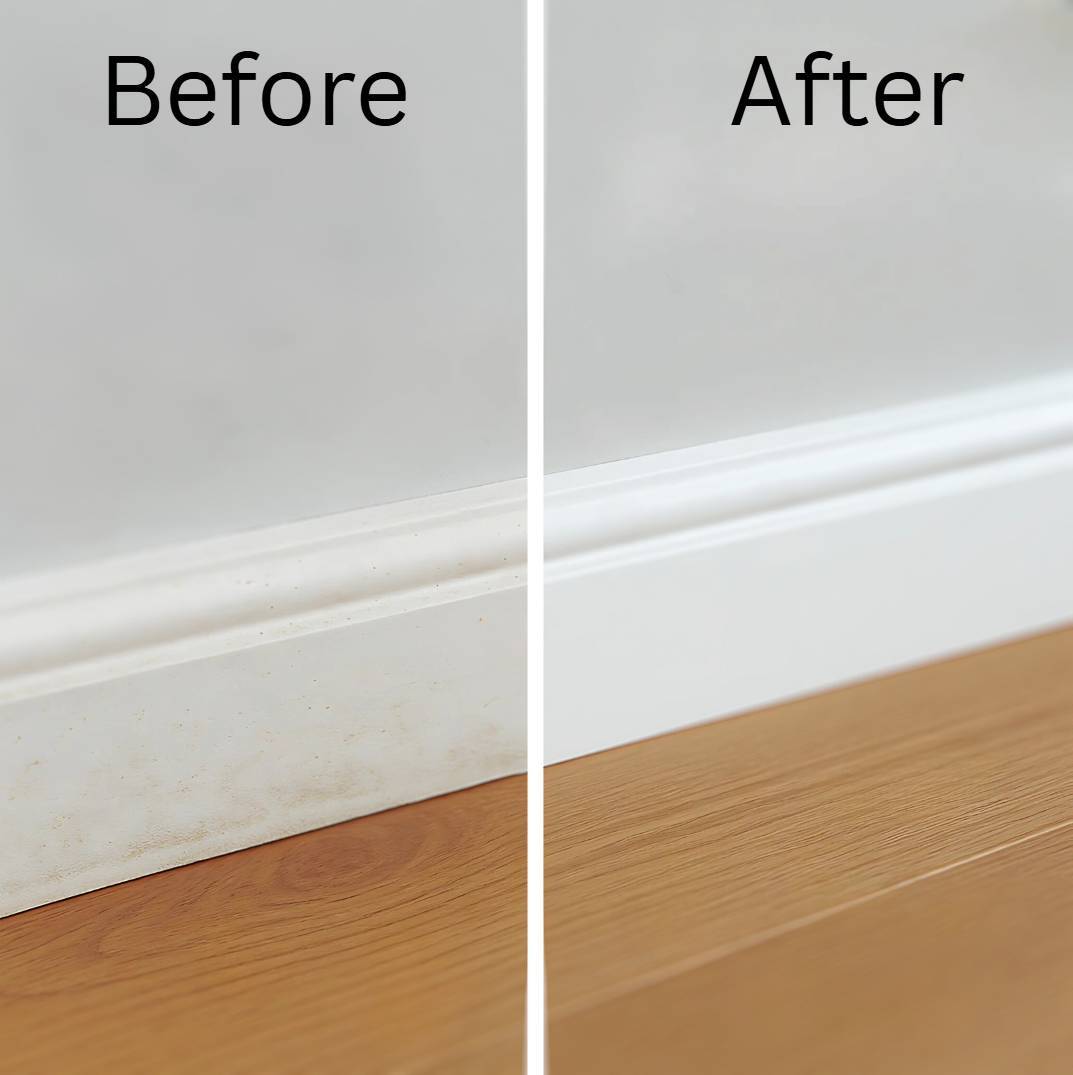
How To Clean Skirting Boards | Restore Old Skirting | Skirting World
Posted by Lee Watkinson on 19th Jun 2025
Skirting boards sit at the junction between wall and floor, copping the worst of floor cleaning splashes, vacuum bumps, and dust settlement. Their intricate profiles can make proper cleaning a bit fiddly, but the results are worth the effort.

What you need
Most skirting board cleaning can be done with items you probably already have at home. Here's what works best:
Essential tools
- Vacuum with brush attachment
- Microfibre cloths (at least 3)
- Bucket for warm water
- Old toothbrush for corners
Cleaning solutions
- Washing-up liquid
- White vinegar (for tough stains)
- Sugar soap (for heavy-duty cleaning)
- Baking soda (for stubborn marks)
Most cleaning jobs need nothing more than warm water, a drop of washing-up liquid, and a microfibre cloth. Start simple before reaching for stronger products.
Basic cleaning routine
This straightforward routine works for regular maintenance cleaning and handles most everyday dirt and dust:
Vacuum first
Use your vacuum's brush attachment to remove loose dust and debris. Work along the full length of each skirting board, paying attention to corners and any grooved details.
If you don't have a vacuum, a dry microfibre cloth works just as well for this step.
Mix your cleaning solution
Add a few drops of washing-up liquid to a bucket of warm water. You want just enough to create light suds when you stir it.
Hot water can damage paint finishes, so stick to warm. Less soap is better than more - too much creates streaks.
Wipe clean
Dip a microfibre cloth in the solution, wring it out well, and wipe along the skirting boards. Work in sections so you can tackle any stubborn spots while the cloth is still damp.
For detailed profiles, use an old toothbrush dipped in the solution to get into the grooves.
Rinse and dry
Go over everything again with a clean, damp cloth to remove any soap residue. Then dry with a fresh microfibre cloth to prevent water marks.
Don't leave skirting boards to air dry - this can cause streaking and water damage on some materials.
Time-saving tip: Clean from one end of the room to the other rather than jumping around. With white skirting, it's not always obvious which sections you've cleaned until they dry.
Clever cleaning hacks
These lesser-known tricks can make skirting board cleaning much easier:

Use a dryer sheet for dusting
Tumble dryer sheets have anti-static properties that repel dust longer than regular cloths. Run one along your skirting boards after cleaning to keep them dust-free for weeks longer.
Tennis ball trick for scuffs
A clean tennis ball can remove scuff marks without damaging paint. Just rub gently on the mark - the felt texture is mildly abrasive but won't scratch painted surfaces.
Paint brush for detailed profiles
A clean 1-inch paint brush dipped in soapy water gets into ornate profiles better than cloths or toothbrushes. The bristles flex into curves and corners that other tools can't reach.
Sponge mop for back-friendly cleaning
A sponge mop with a microfibre head means you can clean skirting boards standing up. Much easier on your back than kneeling, and you can work faster too.
Dealing with stubborn stains

When soapy water isn't enough, try these targeted approaches for common skirting board stains:
Scuff marks and crayon
Make a paste with baking soda and water. Rub gently with a soft cloth, then wipe clean with a damp cloth. This works particularly well on scuffs from furniture and shoes.
Grease and fingerprints
Mix equal parts white vinegar and water in a spray bottle. Spray onto the stain, leave for a few minutes, then wipe with a microfibre cloth. The acid in vinegar cuts through grease effectively.
Paint splatters
For water-based paint, try warm soapy water first. For dried paint, carefully scrape with a plastic scraper, then clean the area. Avoid metal scrapers that can damage the skirting finish.
Mould and mildew
Spray with a solution of one part white vinegar to four parts water. Leave for 10 minutes, scrub with an old toothbrush, then wipe clean. Open windows for ventilation during and after cleaning.
Always test cleaning solutions on a hidden area first, especially on painted surfaces. Some paint finishes can be more delicate than others.
Cleaning different materials
Different skirting board materials need slightly different approaches to avoid damage:

Maintenance schedule
How often you need to clean your skirting boards depends on your household. Here's a sensible schedule that works for most homes:
High-traffic areas
Hallways, living rooms, and kitchens
Medium-traffic areas
Bedrooms and home offices
Wet areas
Kitchens and bathrooms
Simple approach: If you don't want to track every room separately, dust all skirting boards when you vacuum and give them a proper clean every couple of months.
Common problems and solutions
Here are solutions to the most frequent skirting board cleaning challenges:

Keeping skirting boards clean
Regular skirting board cleaning doesn't need to be a major chore. A quick dust when you vacuum and a proper clean every few months will keep them looking fresh and prevent the build-up of stubborn stains.
The key is catching dirt before it becomes ingrained. Most problems come from leaving spills and marks too long, especially in kitchens and high-traffic areas where grease and grime accumulate faster.
Remember that different materials need different approaches, but warm soapy water handles the vast majority of cleaning jobs without any drama. If cleaning isn't bringing your skirting boards back to life, it might be time to consider repainting or replacement.
Looking for new skirting boards?
If cleaning isn't bringing your skirting boards back to life, browse our range of easy-clean skirting board designs.







